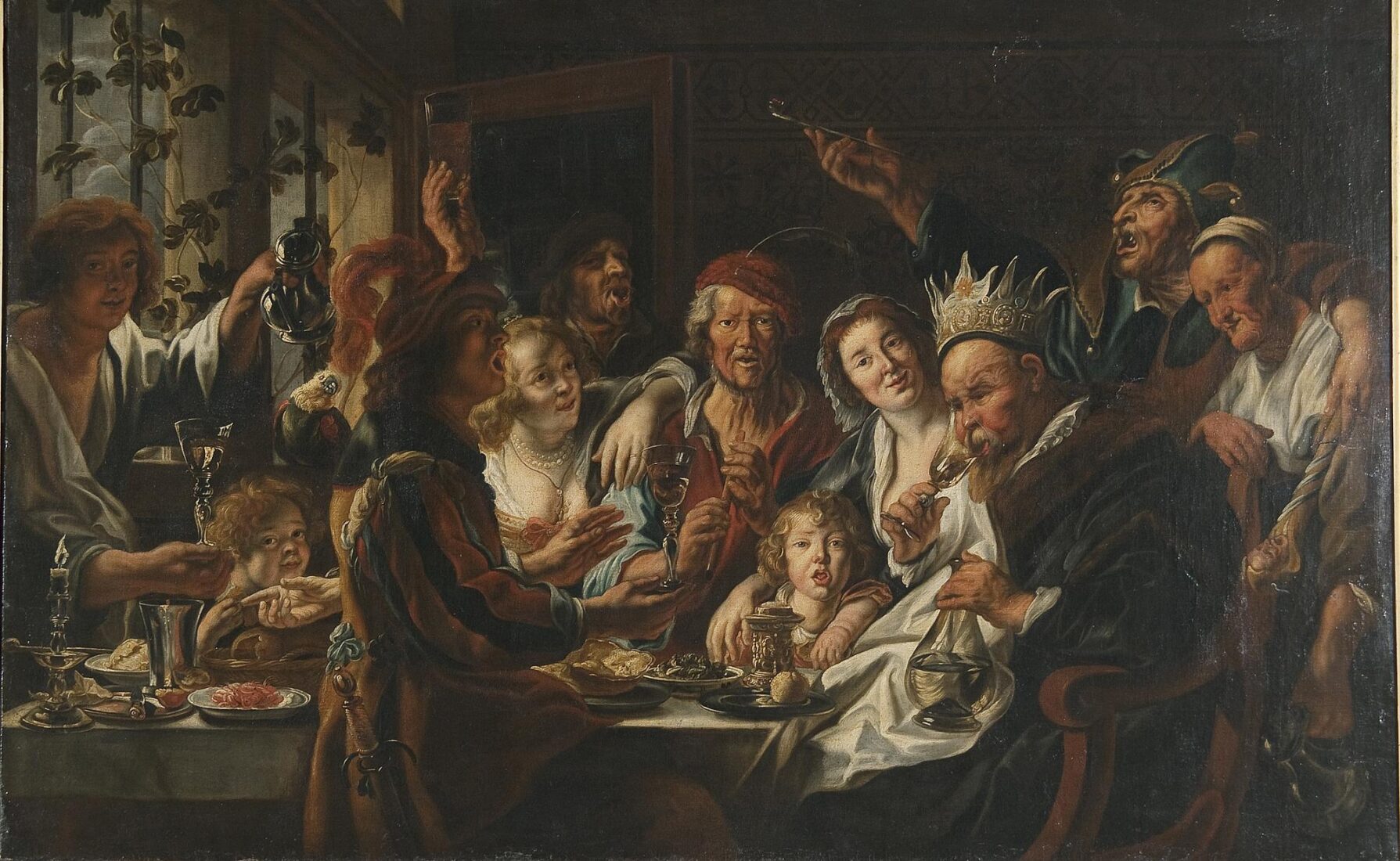We use cookies to make our site work properly, to personalize content and ads, to provide social media features and to analyze our traffic. We also share information about how you use our site with our social media, advertising and analytics partners. Read the Cookies Policy.

The Feast of the Epiphany
Oil on canvas, 118 x 187 cm
Donated by the University
“The feast of the Epiphany” in the National Gallery is part of the Technical University’s donation. This is probably a copy by Jordaens’s studio of the master’s work currently in the Gemaldegalerie Alte Meister (Kassel). Jordaens, a follower of Adam van Noort (1561/62–1641) got married to his master’s daughter, Catarina, who apparently became his favourite model. The artist received many commissions of his own, and worked closely with his father-in-law, as well as with Rubens (Peter Paul Rubens, 1577–1640). Similarly to his father-in-law, Jordaens maintained a large studio to handle the commissions he received; he amassed a great fortune and a notable personal art collection. He died during a cholera epidemic that swept Antwerp in 1678. A painter of historical, mythological, allegorical, religious, and genre scenes, a watercolourist, and a printmaker, he was one of the greatest 17th-century Flemish painters, alongside Anthony van Dyck (1599–1641) and Rubens.
The subject of this painting is a Flemish folk custom of celebrating Epiphany: during a long, festive banquet, a cake is served, with a black bean hidden inside. Whoever finds the bean becomes king or queen of the day, wears a crown, and chooses who sits beside them. In the six versions of this painting produced by Jordaens, the king is depicted raising his glass to toast, while the merry company cries, ‘The King drinks!’ The oldest man is depicted as king. Notably, the artist’s relatives – including his wife, daughter, father-in-law, children, and friends – served as models for the folk figures.
The oldest version – which served as model for the painting in the National Gallery – is the one in the Gemaldegalerie Alte Meister in Kassel and was produced in four distinct phases. In the first one, circa 1635, the painting was limited to the group surrounding the flute player and the elderly woman on the right. The young singer to the left was added later, and eventually a full-length male figure was also introduced. Around 1636/37, the artist’s daughter, Elizabeth, served as model for the young woman in the center. In the 1650s, the last section was added, which transformed the painting into a drinking feast, with a comic effect.
The painting in the National Gallery replicates the scene up to the third phase, depicting a cheerful social gathering, a fact that leads us to believe that it must have been produced after 1637 and before the final version.

